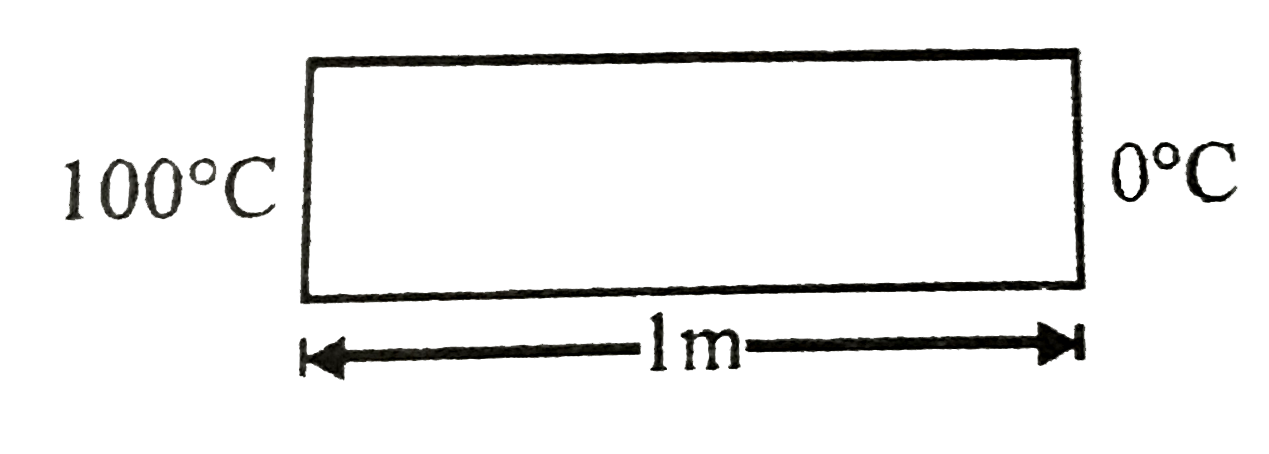Three cubes of sides 1,2,3 cm are at constant temperature of 100∘C. Then the amount of heat lost per second by them are in the ratio
1:8:27
27:8:1
1:4:9
9:4:1
The correct Answer is:C
R1=σA1T4
R2=σA2T4
R3=σA3T4
R1:R2:R3=A1:A2:A3
=l21:l22:l23
=1:4:9
Topper's Solved these Questions
- KINETIC THEORY OF GASES & RADIATION BOOK - NIKITA PUBLICATIONCHAPTER - KINETIC THEORY OF GASES & RADIATION EXERCISE - MCQs (Spectrum of Black Body Radiations in Terms Wavelength)
22 Videos
- KINETIC THEORY OF GASES & RADIATION BOOK - NIKITA PUBLICATIONCHAPTER - KINETIC THEORY OF GASES & RADIATION EXERCISE - MCQs (Kirchhoffs law of heat radiation)
19 Videos
- KINETIC THEORY OF GASES & RADIATION BOOK - NIKITA PUBLICATIONCHAPTER - KINETIC THEORY OF GASES & RADIATION EXERCISE - MCQs (Absorption, reflection and transmission of heat radiation)
65 Videos
- INTERFERENCE AND DIFFRACTIONBOOK - NIKITA PUBLICATIONCHAPTER - INTERFERENCE AND DIFFRACTIONEXERCISE - MULTPLE CHOICE QUESTIONS
333 Videos
- MAGNETIC EFFECT OF ELECTRIC CURRENTBOOK - NIKITA PUBLICATIONCHAPTER - MAGNETIC EFFECT OF ELECTRIC CURRENTEXERCISE - MCQs (Sensitivity and accuracy of M.C.G.)
1 Videos
Similar Questions
A sphere of radius 15 cm is at a temperature of 215∘C . Find the maximum amount of heat which may be lost per second by radiation when the sphere is placed in an enclosure at 25∘C. Take, σ=5.67×10−8Wm−2K4
View SolutionTwo identical spheres A and B are suspended in an air chamber which is maintained at a temperature of 50∘C. Find the ratio of the heat lost per second from the surface of the spheres if
a. A and B are at temperatures 60∘C and 55∘C, respectively.
b. A and B are at temperatures 250∘C and 200∘C, respectively.
View Solution
Knowledge Check
Three black bodies A, B and C in the form of cubes of sides in the ratio 3:4:5 are kept at the same high temperature. The ratio of the quantity of heat lost per second by A, B and C will be
A27:64:125B5:4:3C9:16:25D25:16:9The lengths and radii of two rods made of same material are in the ratios 1 : 2 and 2 : 3 respectively. If the temperature difference between the ends for the two rods be the same, then in the steady state, the amount of heat flowing per second through them will be in the ratio
A1:3B4:3C8:9D3:2A rod of 1m length and area of cross-section 1cm2 is connected across two heat reservoirs at temperature 100∘C and 0∘C as shown. The heat flow per second through the rod in steady state will be [Thermal conductivity of material of rod =0.09kilocalm−1s−1('∘C)]
 A9×10−4kilocal/secB9kilocal/secC0.09kilocal/secD9×10−6kilocal/sec
A9×10−4kilocal/secB9kilocal/secC0.09kilocal/secD9×10−6kilocal/sec
105 calories of heat is required to raise the temperature of 3 moles of an ideaol gas at constant pressure from30∘C to 35∘C. The amount of heat required in calories to raise the temperature of the gas though the range (60∘C to 65∘C) at constant volume is (γ=CpCv=1.4)
View Solution310 J of heat is required to rise the temperature of 2 moles of an ideal gas at constant pressure from 25∘C to 35∘C. The amount of heat required to raise the temperature of the gas through the same range at constant volume, is
View SolutionA glass window conducts out a certain quantity of heat per second when the inside temperature is 10∘C and the outside temperature is −10∘C. The same quantity of heat will be conductued in through the window per second when the inside temperature is −43∘C and the outside temperature is
View Solution105 calories of heat is required to raise the temperature of 3 moles of an ideaol gas at constant pressure from30∘C to 35∘C. The amount of heat required in calories to raise the temperature of the gas though the range (60∘C to 65∘C) at constant volume is (γ=CpCv=1.4)
View SolutionThe lengths and radii of two rods made of same material are in the ratios 1 : 2 and 2 : 3 respectively. If the temperature difference between the ends for the two rods be the same, then in the steady state, the amount of heat flowing per second through them will be in the ratio
View Solution
